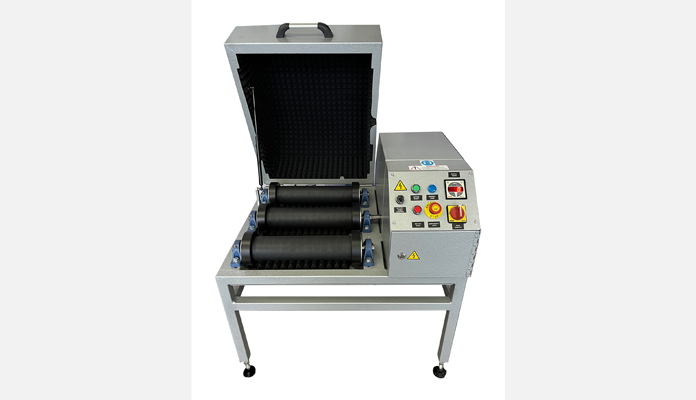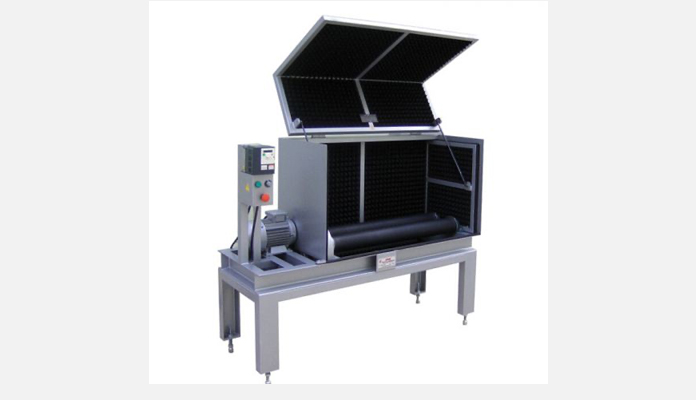

Laboratory Ball & Rod Mill
- Feeding Size: < 8 mm
- Feed quantity 500-1500 ml
- Final Fineness: < 40 μm*
- AISI 304 Stainless Steel Jars, Ø200×200 mm – 6 L internal volume or Ø200×300 mm – 9 L internal volume.
- Feeding Size: < 8 mm
- Feed quantity 500-1500 ml
- Final Fineness: < 40 μm*
- Milling Jars or Tubes made of AISI 304 stainless steel, Ø200×200 mm – 6 L internal volume or Ø200×300 mm – 9 L internal volume.
- Suitable for both dry and wet milling.
- Three rubber-coated driver rollers
- Roller speed infinitely variable between 0-300 rpm by an electronic motor speed controller Workable with multi tubes simultaneously
- Each tube provided with one charge of grinding balls (alloysteel heat-treated hardened) and one charge of grinding rods (AISI 304 stainless steel)
- Electrical Motor : 1,5 hp, 900 rpm , 220 V, 3 p, 50 Hz
The Dynamic Duo in Grinding: Ball & Rod Mills
In the realm of mineral processing, the Ball and Rod Mills stand out as powerful tools for grinding. Both are robust machines designed for specific grinding needs, but each plays a unique role in crushing and grinding ores to the desired size.
Understanding Ball & Rod Mills
Ball and Rod Mills are types of grinding equipment used to turn large raw materials into smaller pieces. They use grinding media – balls in Ball Mills and rods in Rod Mills – to aid in this process.
The Ball Mill
The Ball Mill is a grinding device used to reduce minerals and ores to a finer particle size. Inside the mill, the grinding media – balls – tumble and crush the raw material into a fine powder. Ball Mills are particularly effective when you need to produce ultra-fine powders and are commonly used in metallurgical, mining, and cement industries.
The Rod Mill
In contrast, Rod Mills use long steel rods as their grinding media. These mills are often used as the first stage in grinding circuits because they are excellent for producing coarser particles. Rod Mills are typically used in applications where grinding materials to a size suitable for downstream processes is crucial.
Benefits of Ball & Rod Mills
Ball and Rod Mills are versatile, capable of processing a wide range of ore types, and are highly efficient. Their durability, ease of operation, and adaptability make them ideal for both small-scale and large-scale mineral processing operations.
Choosing Between a Ball & Rod Mill
Choosing between a Ball and Rod Mill depends on your processing needs. If you’re looking to create fine particles or powders, a Ball Mill would be your go-to. On the other hand, if coarse grinding is required, a Rod Mill is ideal.
The Future of Ball & Rod Mills
As technology advances, we can expect Ball and Rod Mills to evolve, becoming smarter, more efficient, and safer. The future may bring real-time monitoring, advanced safety mechanisms, and energy-saving features.
Conclusion
Whether you are in the mining, metallurgical, or cement industries, Ball and Rod Mills are indispensable grinding devices. Depending on your specific needs, either mill can significantly boost your mineral processing efficiency.









